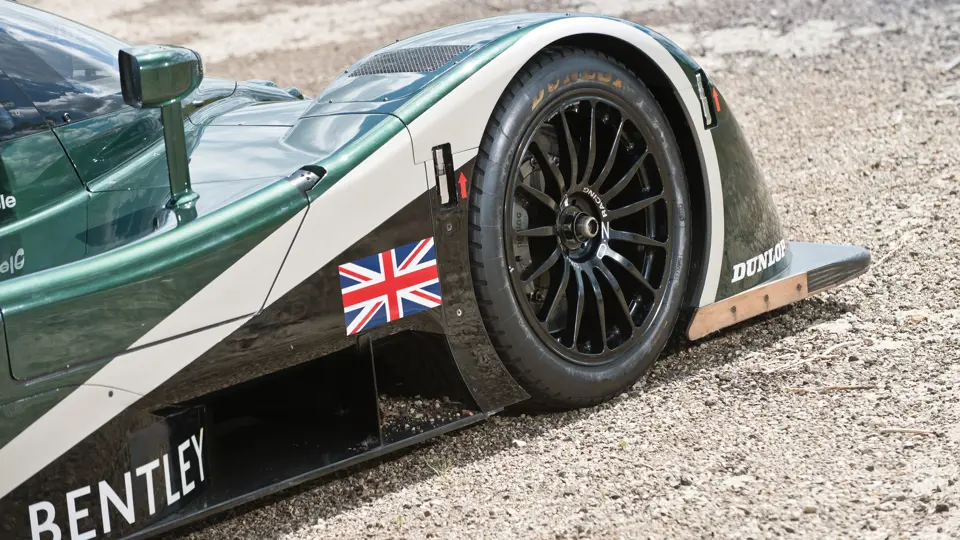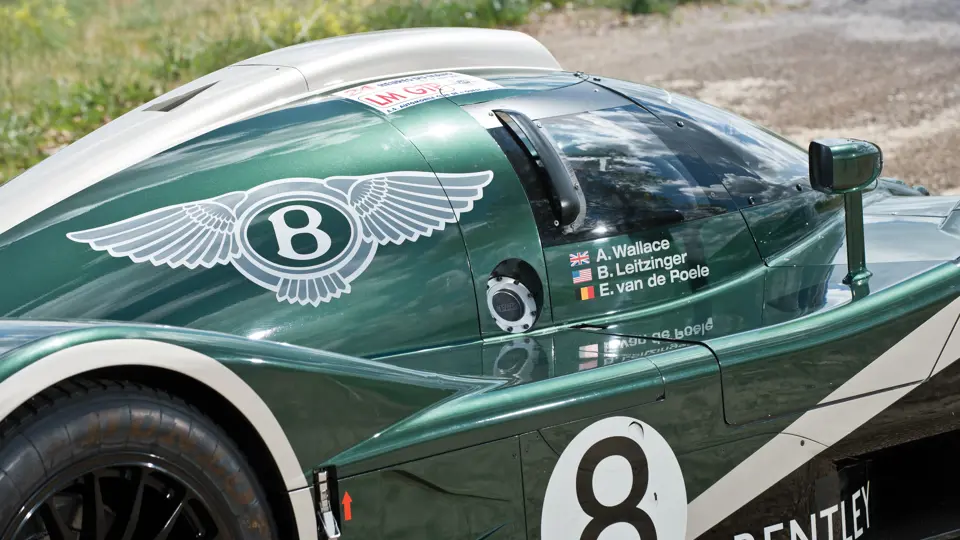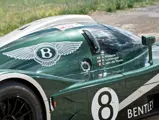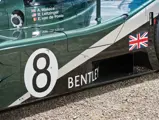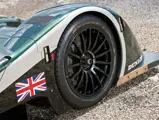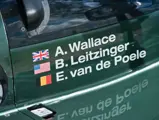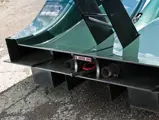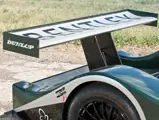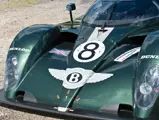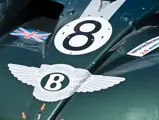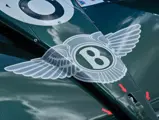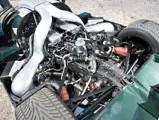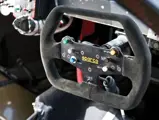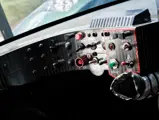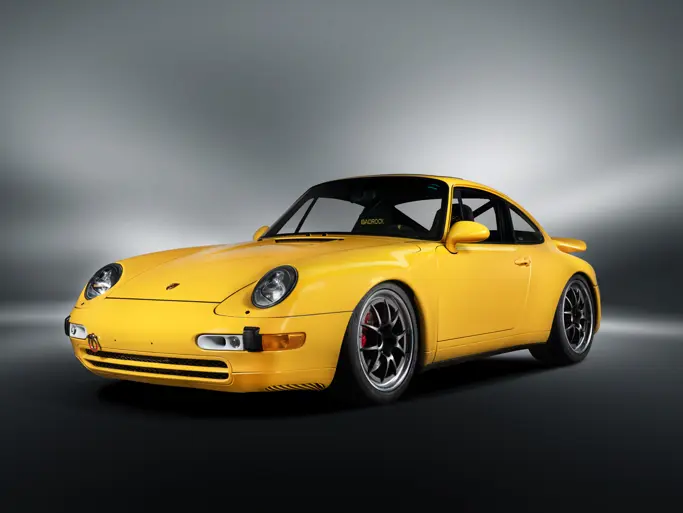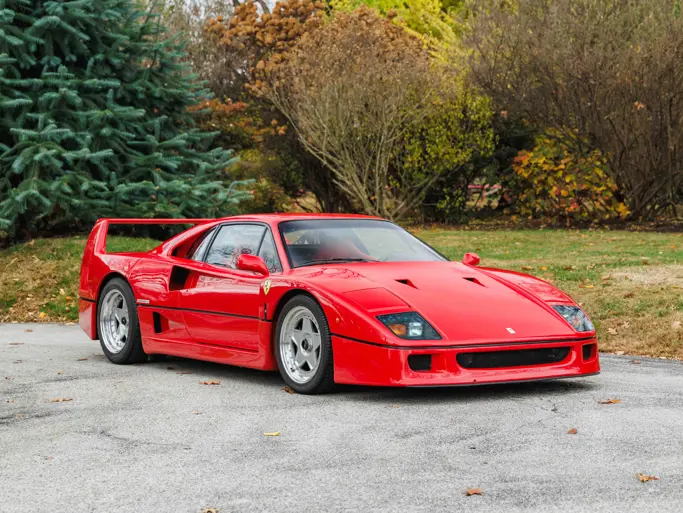670 hp, 3.6-liter twin-turbocharged V-8 engine, electronic fuel injection, Ricardo six-speed sequential dual-clutch manual gearbox, front independent suspension with double-wishbones, torsion bars at the front and coil springs at the rear and a pushrod system with horizontal dampers, and four-wheel hydraulic disc brakes. Wheelbase: 104.3"
Please note that this vehicle will be sold on a Bill of Sale only.
• First Team Bentley to finish on the podium at Le Mans in 71 years
• Third Place at 2001 24 Hour of Le Mans
• Last raced at Road America in 2007
The inspiration for the successful Bentley Speed 8 program belongs to Dr. Ferdinand Piech, grandson of Ferdinand Porsche, who designed the Auto Union Grand Prix cars in the 1930s. As chairman of Volkswagen, Piech directed the acquisition of Bentley in June 1998, but he had been the guiding force on the Porsche 917 program, which had won Le Mans in 1970 and 1971. Piech also worked on the formidable Audi Quattro rally car and thought that Audi should enter sports car racing.
In 1998, Piech commissioned Italian contractor Dallara to build a sports racer to use the Audi 3.6-liter turbocharged V-8, mid-mounted in a carbon fiber tub. The car became the Audi R8 roadster, which would enjoy a spectacular competition record, losing only 16 races in which it was entered, between 2000 and 2006.
Coincidentally, Audi Sport Team Joest director Wolfgang Ullrich was eying the 24 Hours of Le Mans, which had attracted BMW, Nissan, Mercedes-Benz, Porsche, and Toyota. Through their joint efforts, the R8 would win the Le Mans 24 Hours five times, in 2000, 2001, 2002, 2004, and 2005. It won the American Le Mans Series seven times, from 2001–2006, the European Le Mans Series in 2001, and it was Le Mans Series champion in 2004. Even as it was being replaced in the American Le Mans Series by the turbocharged diesel R10 in 2006, Allan McNish and Rinaldo Capello sent the R8 out with style, winning the R8’s very last race on July 1, at Lime Rock, Connecticut.
At the same time the R8R open car was being developed for the 1999 season, Audi also hired Tony Southgate’s Racing Technology Norfolk, or RTN, in England to build the R8C Coupe. Southgate had worked with Lotus, BRM, and Jaguar, where he had designed the Le Mans winning Jaguar XJR12.
The Audi R8Rs weren’t fast enough to win Le Mans in 1999, but they finished a creditable Third and Fourth behind a BMW V1-2 and Toyota GT One. The R8C Coupes both failed to finish, one went out with gearbox problems in the third hour and one with engine troubles in the 18th.
The Audi R8 started 2000 by winning at Sebring, bettering its Third Place from the year before, and then swept the 24 Hours of Le Mans with a one-two-three finish. Frank Biela, Tom Kristensen, and Emanuele Pirro took the checkered flag, followed across the line by Laurent Aiello, Allan McNish,z and Stephane Ortelli, and Michele Alboireto, Christian Abt and Rinaldo Capello.
Piech decided that Bentley’s racing heritage should be revived and it should have a parallel course to Audi, competing in the closed LMP GTP class at Le Mans, while Audi would contest the LMP 900 open division. The Audi R8C Coupe would evolve into the Bentley EXP Speed 8 Coupe, the car which is on offer today.
The Bentley EXP Speed 8 Coupe was given to designer Peter Elleray to revise. He had worked on the Arrows F1 cars in the 1980s and he developed a new chassis, planning to use the Bentley W12 engine. The W12 was tested in a Lola chassis but just wasn’t suitable, and the decision was made to revert to the 600 horsepower 3.6-liter turbocharged Audi V-8. Two prototypes were built and tested at Snetterton.
The cockpit area of the EXP Speed 8 was a carbon fiber and aluminum honeycomb with three carbon fiber hoops: one over the driver, one in front of him, and one around the footwell. It weighed only 154 pounds. The front and rear suspensions were by wishbones, with torsion bars up front and coil springs at the rear. A six-speed transmission was supplied by Xtrac, with electro-pneumatic shifting.
The first Bentley was intended for Le Mans in 2001 and was finished in November 2000. Three more EXPs were built, one was taken to Monza for high-speed testing, and then it made a surprise appearance on Bentley’s stand at the Geneva Motor Show in March 2001. After the show, it went to Czechoslovakia for further testing.
Richard Lloyd had run a team of Audis in the British Touring Car Championship and the Audi R8C Coupes at Le Mans in 1999. He was chosen to manage the new Team Bentley, with help from five time Le Mans winner Derek Bell.
Piech elected to run two Bentley coupes at the 2001 24 Hours of Le Mans. The first car would be driven by Andy Wallace, Butch Leitzinger, and Eric van der Poele. Wallace had won Le Mans in 1988 in a Jaguar XLR9 and also won Daytona in 1997 and 1999, sharing a Riley & Scott with Leitzinger. Van der Poele had won the 12 Hours of Sebring in 1995 in a Ferrari and 1996 in a Riley & Scott.
The second car was driven by Martin Brundle, Stephane Ortelli, and Guy Smith. Brundle had won Le Mans in 1990 with a Jaguar XJR-12 and the World Sports Car Championship in 1998. Ortelli had won Le Mans in 1998 with a Porsche, and Guy Smith was the U.S. Indy Lights Rookie champion in 1998.
At 4 p.m., the Bentleys started the 2001 24 Hours of Le Mans in seventh and ninth places on the grid, in heavy rain. After half an hour, Brundle was leading the race, but the rain eventually penetrated the cockpit, the windshield misted up, and the electronic gear-shifting started to malfunction. At 9.30 p.m., Smith stopped at Arnage, stuck in sixth gear, with an electrical fire, and the car was withdrawn from the race.
The second car was having similar problems, having fallen back to 17th place after an earlier tire change. Leitzinger made it all the way up to third place by 11 p.m., but then the car jammed in fourth gear. He nursed it back to the pits and it took 45 minutes to replace the gearbox switches. He made it back to third place, then the pneumatic shifter failed, which took nine minutes to fix. Meanwhile, the radio communication had failed, but that problem was solved with a portable radio in a plastic bag in the cockpit.
By 3 p.m., the Bentley was still in third place, 15 miles behind the two leading Audi R8s, and it maintained that position until the finish. At the race’s end, Wallace, Leitzinger, and van der Poele were paraded past the pits in a Red-Label Bentley.
Elleray reworked the Bentley EXP Speed 8 for 2002, and the engine was increased to four liters in displacement. One car was entered for the 24 Hours of Le Mans in 2002, and Wallace, Leitzinger, and van der Poele returned to drive it. The race was a one-two-three sweep for the Audi R8s, but the Bentley came home in Fourth Place, 14 laps behind the winner.
Audi Sport Team Joest R8s had won three Le Mans in a row and elected to take 2003 off, releasing team drivers to the Bentley program. The Speed 8 had been massively updated, both in aerodynamics and safety, and five new cars were built. Two cars were entered in the 2003 Le Mans. The first car, #7, was driven by Guy Smith, Tom Kristensen, and Rinaldo Capello, and the second, #8, was driven by Johnny Herbert, David Brabham, and Mark Blundell. Principal opposition was provided by three privateer Audi R8s with factory support. The Bentley Speed 8s romped home 1-2, with two Audi R8s immediately behind them. The winning Bentley was paraded down the Champs Elysees in Paris the next day, with the drivers seated in two 1920s works 4 ½ liter ‘blower’ Bentleys.
Piech had proved his point and restored Bentley’s racing reputation. Team Bentley was disbanded, and the cars now make regular appearances at the Goodwood Festival of Speed at the BDC Silverstone meeting. The Bentley EXP Speed 8 Coupe on offer today is the very first in this short-lived but glorious episode in Bentley’s racing history. The seller, who has extensive racing history of his own, last exercised it at Road America in 2007 but declares it fully prepped and race-ready for its next owner. In their day, these Bentleys were voted the most handsome cars on any course where they competed, so concours d’elegance invitations are bound to be plentiful.
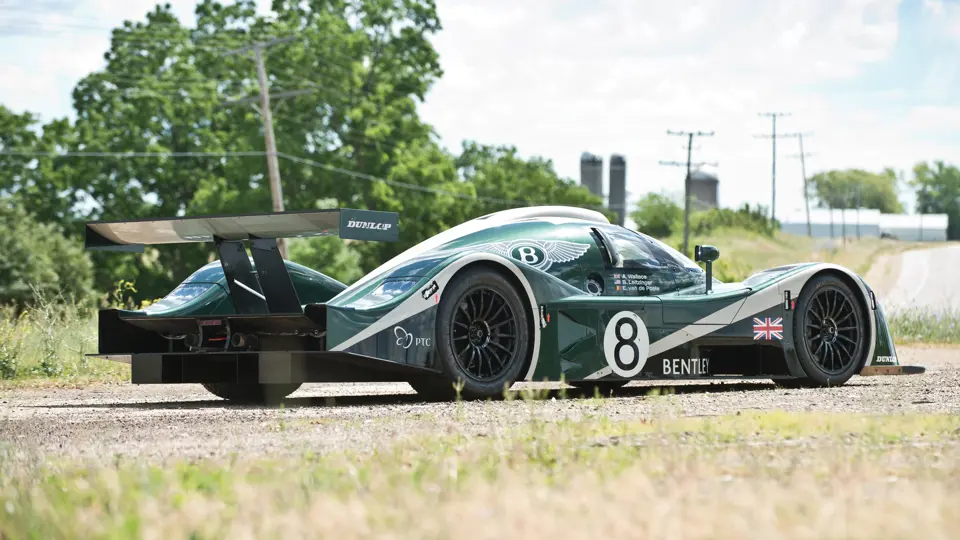

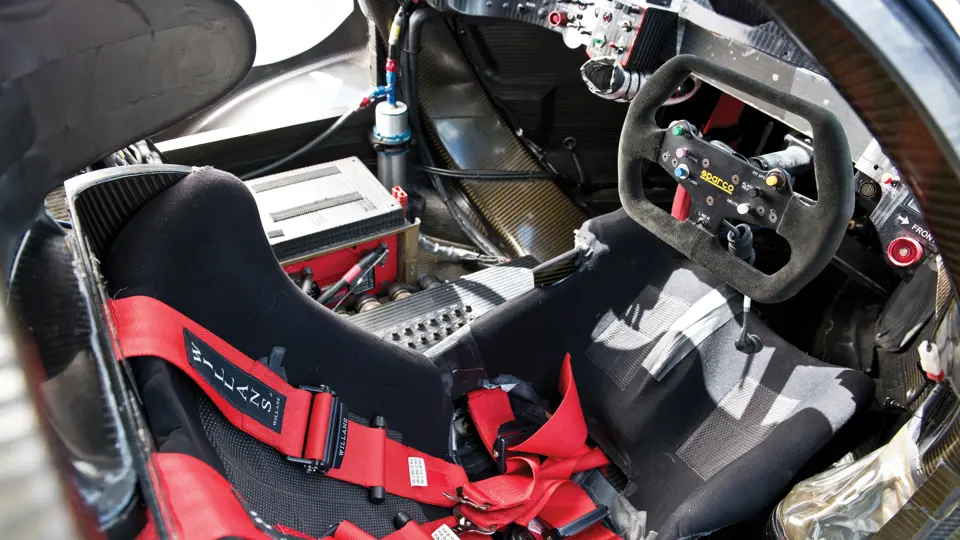

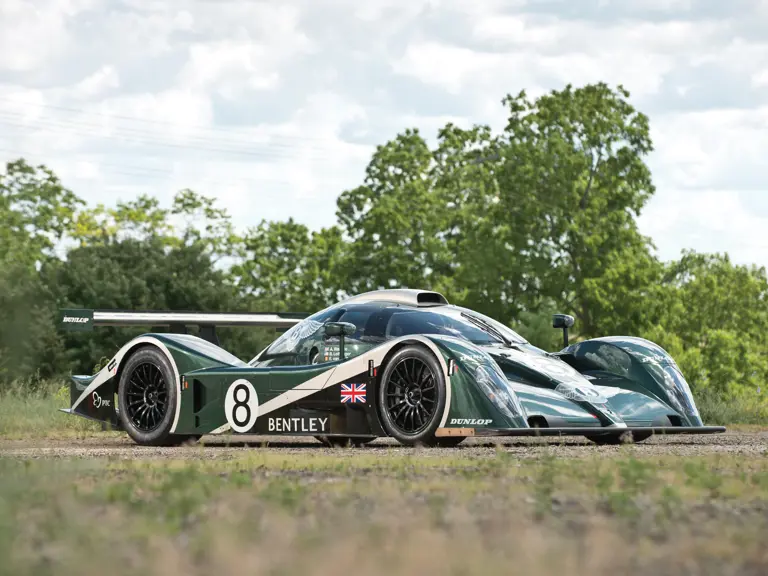

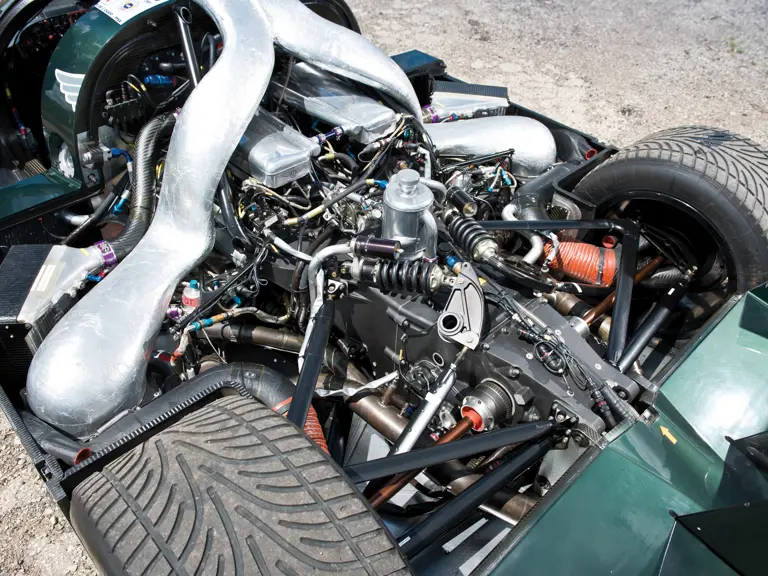
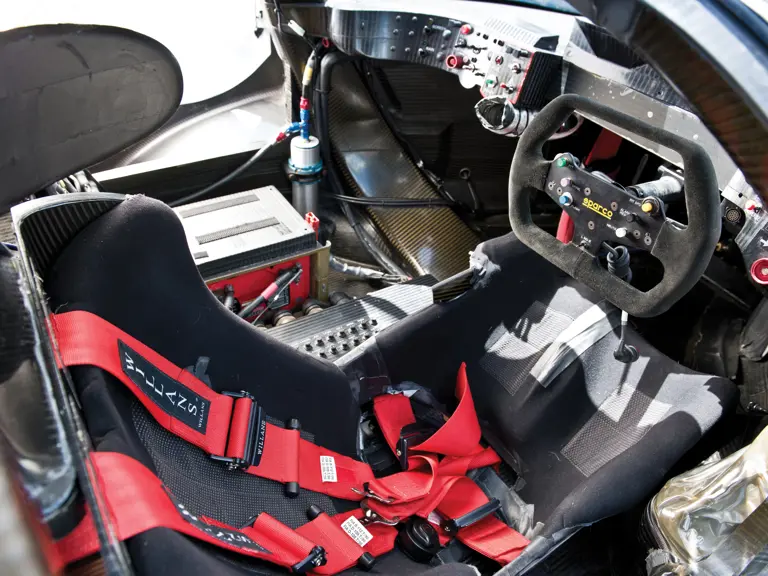

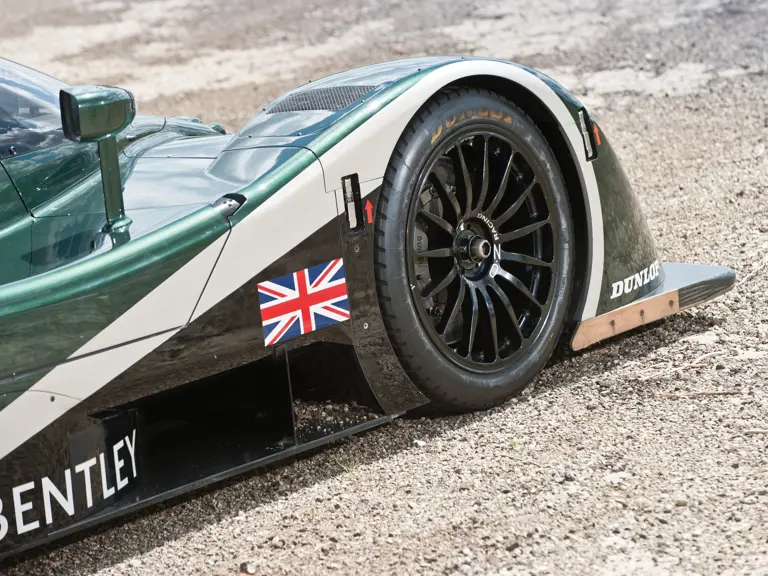
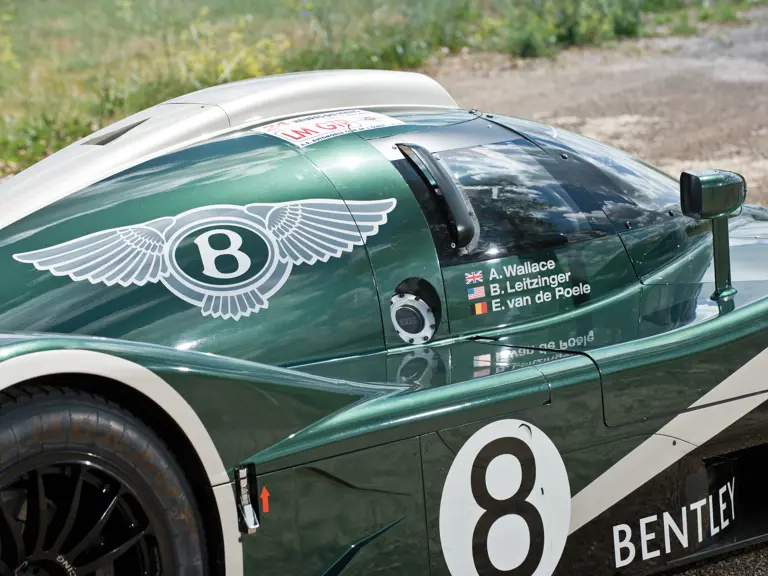
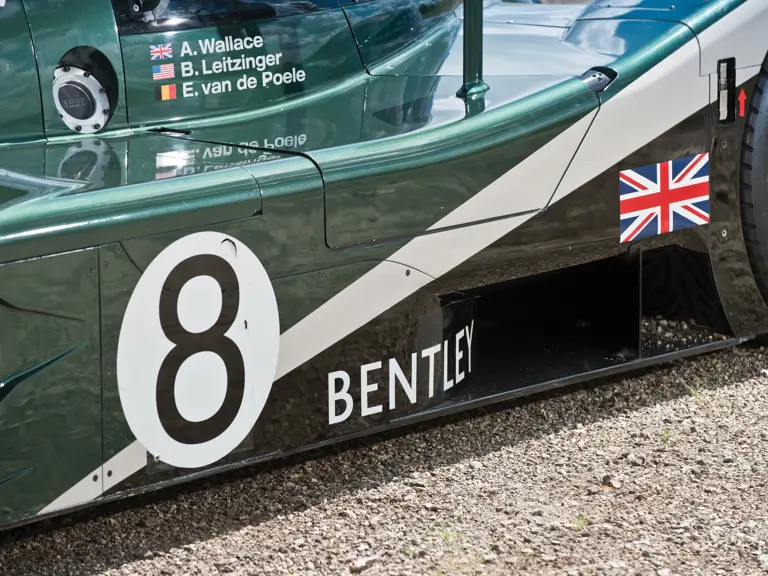
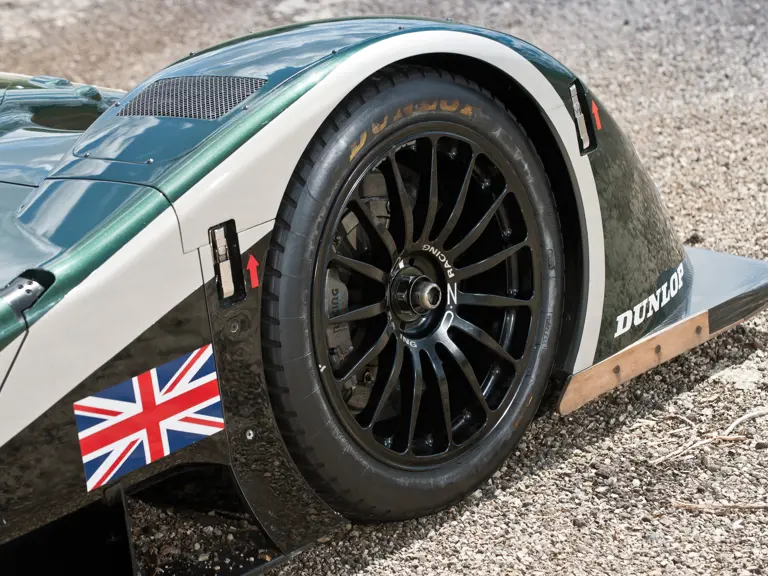
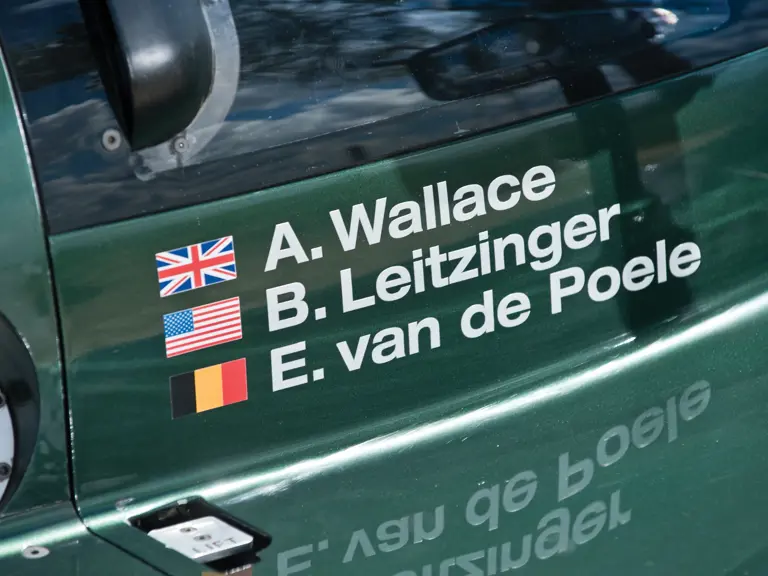
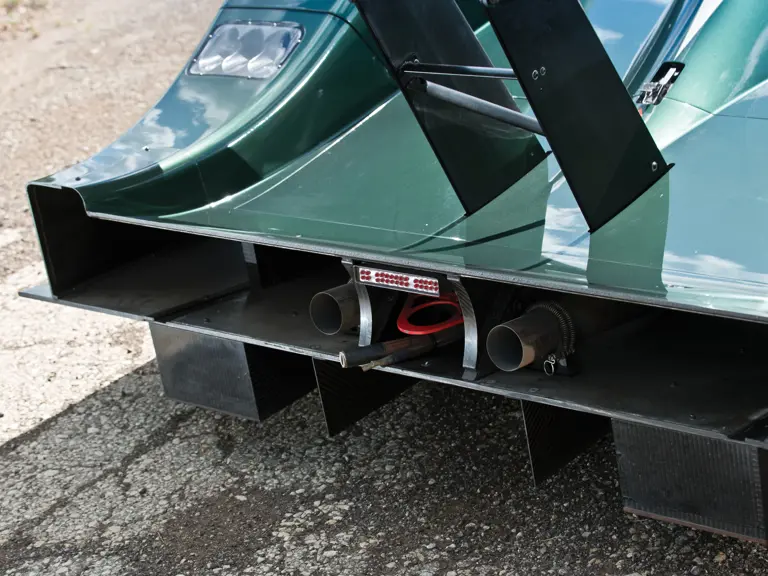


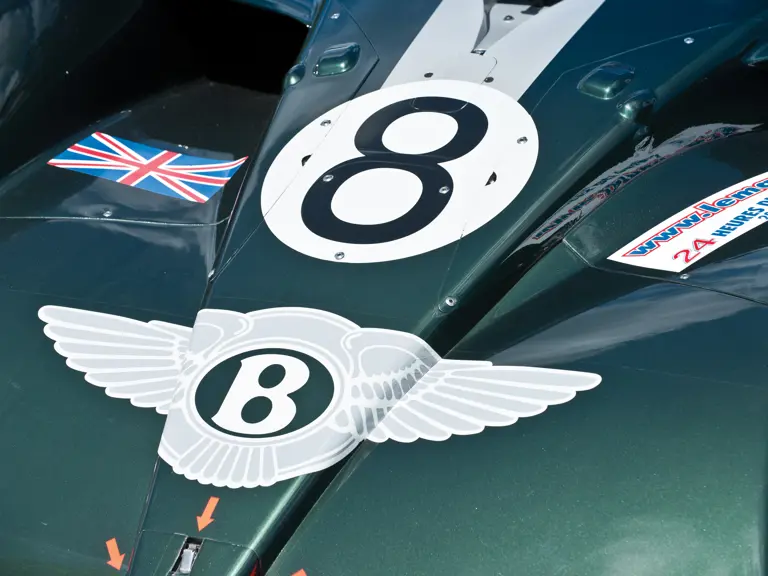
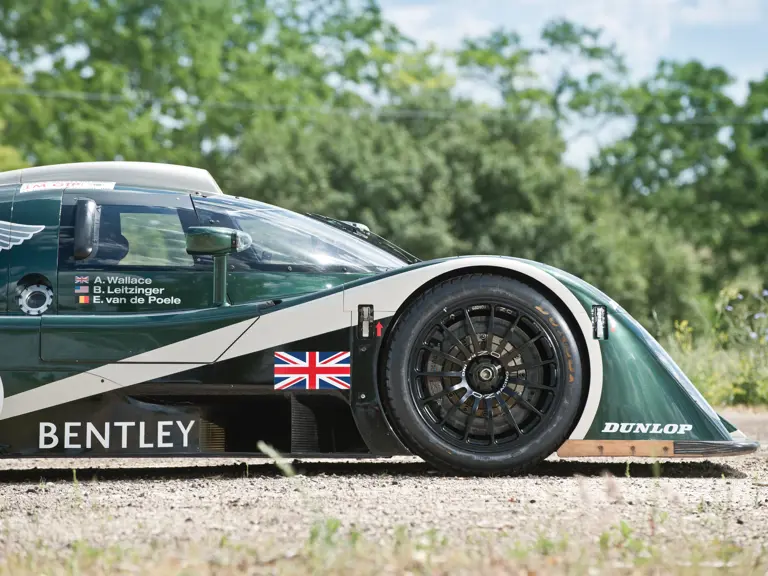
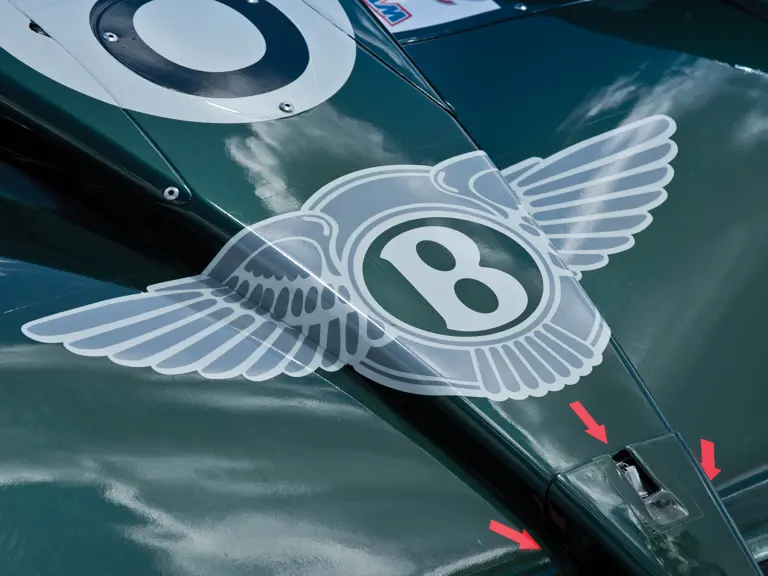
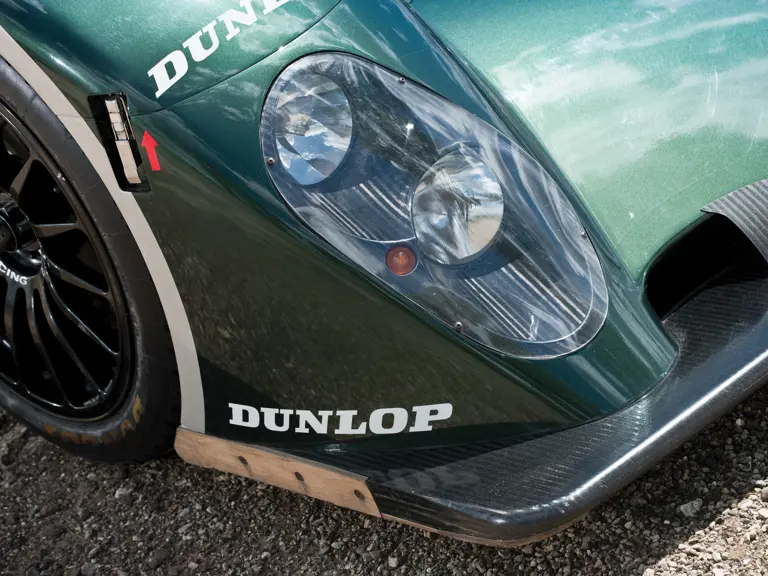
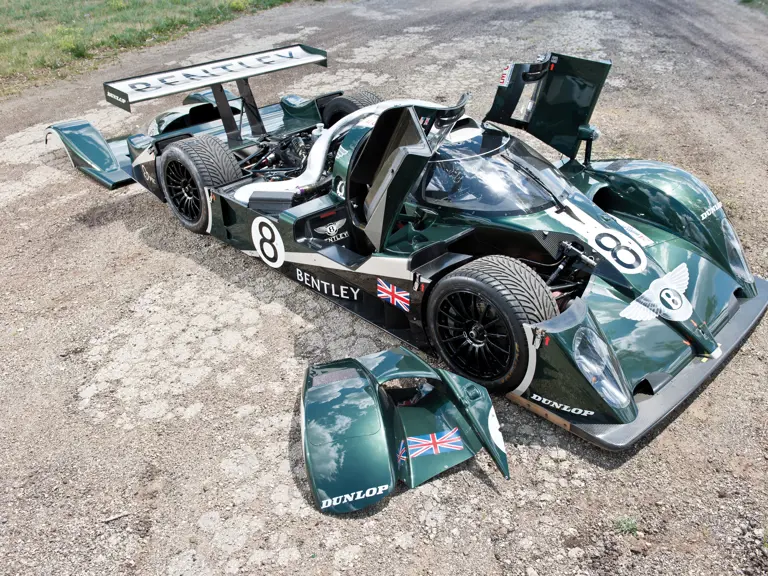
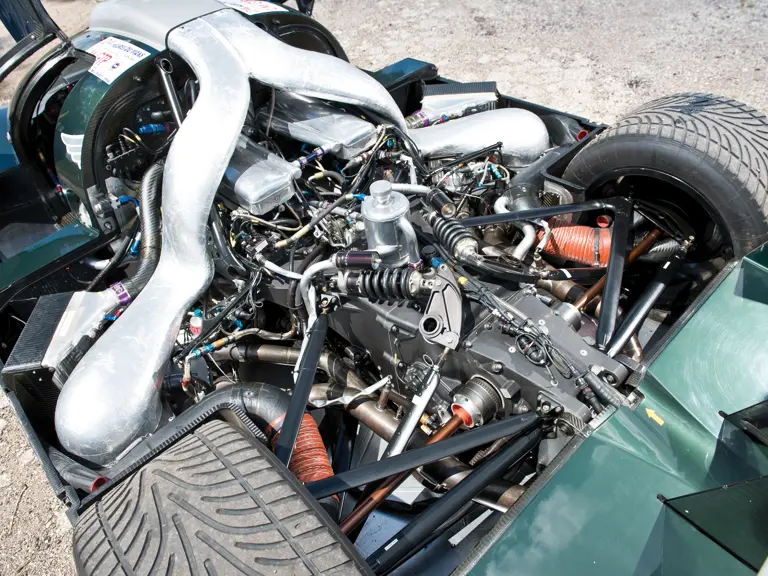
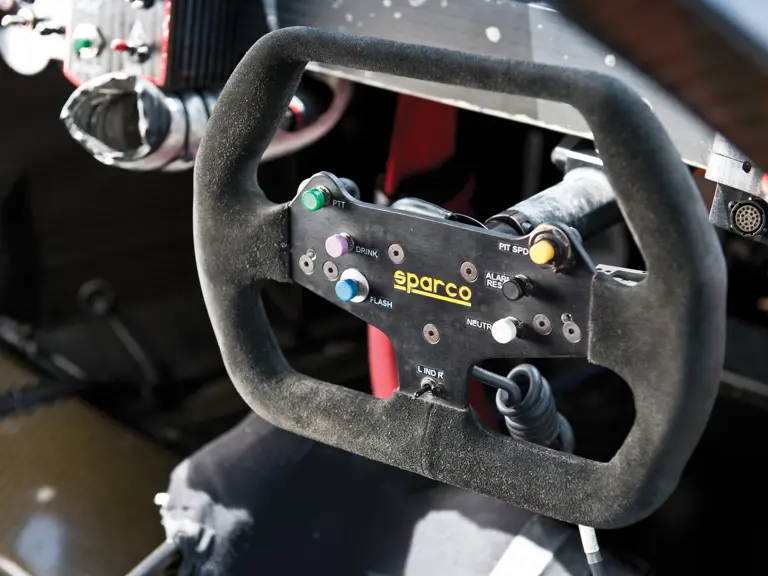

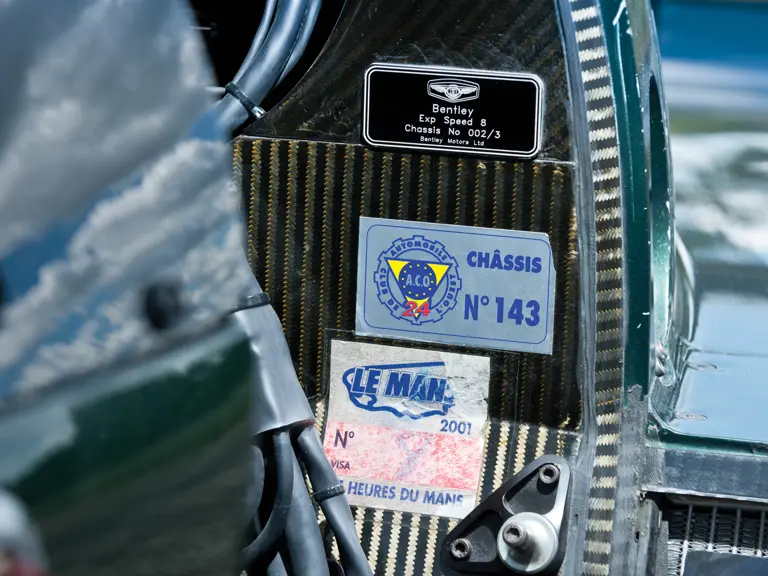
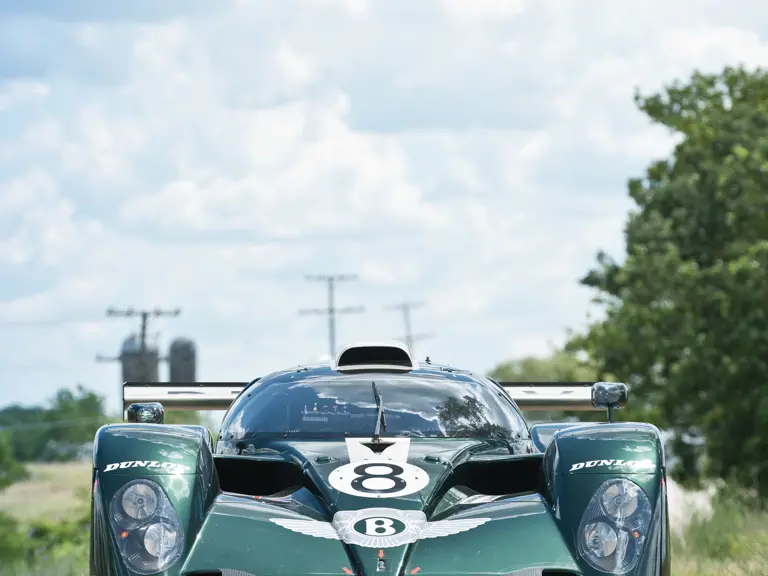

 | Monterey, California
| Monterey, California

